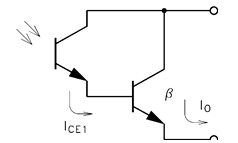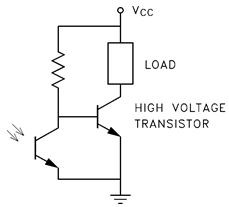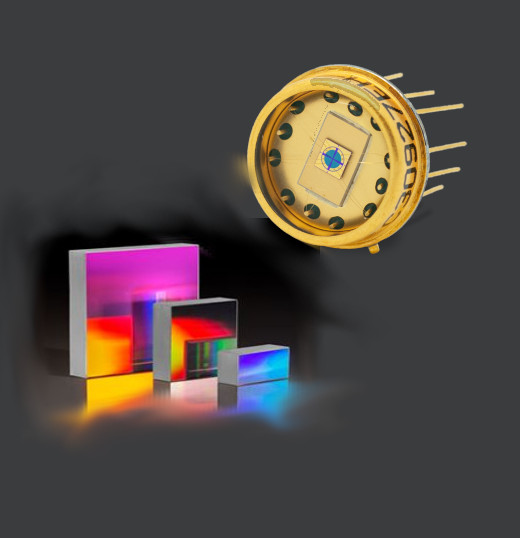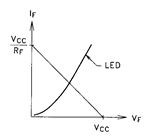
Biasing IREDs and Phototransistors
The light generated by an IRED is directly proportional to the forward current flowing through the device. Various biasing
schemes can be used to set the value of the current. Some are illustrated below.
DC Bias
 |
|
IF = VCC - VF/ RF
RF= VCC- VF/ IF
Example: Select RF such that IF = 20 mA for a GaAlAs IRED. VCC = 5 V
From the data sheets: VF (TYP) @ IF = 20 mA: 1.25 V
∴ R = (5 - 1.25) V / 20 mA = 187.5 Ω
Closest standard resistor value = 180 Ω
∴ IF (TYP) = (5 - 1.25)/180 ≅ 21 mA AC
Bias
When AC biasing an IRED, it is important to prevent the applied IRED voltage from exceeding the maximum rated reverse voltage to avoid damaging the IRED.
 |
|
For circuit interfacing, phototransistors can be treated as any general purpose small signal transistor. The only exception being that phototransistors are driven by incident light rather than by an applied base current.
While capable of linear operation over a limited range of light intensities, phototransistors are normally used as a switch. As such, the designer is primarily concerned with the two boundary conditions; the equivalent “on” and “off” positions.
 |
|
| Position | Ideal | Actual |
| “OFF” Position | VCC | (VCC - RL IDARK) |
| “ON” Position | 0 | VCE(SAT) |
Note that VCE(SAT)1 > VCE(SAT)2.
At times it may be necessary to extend the voltage or current capacity of the phototransistor.
Current capacity can be increased by using the phototransistor to drive a second transistor (Darlington arrangement).

IO ≅ β I CE1
The following approach can be used to switch a voltage greater than the VBRCEO of the phototransistor. The highest collectoremitter voltage seen by the phototransistor is the base-emitter voltage of the high voltage transistor.

Article based on Application Notes from Excelitas Technologies Photometric and Radiometric Terms application note
Heard on the Internet
Imagination is more important than knowledge.
Albert Einstein









